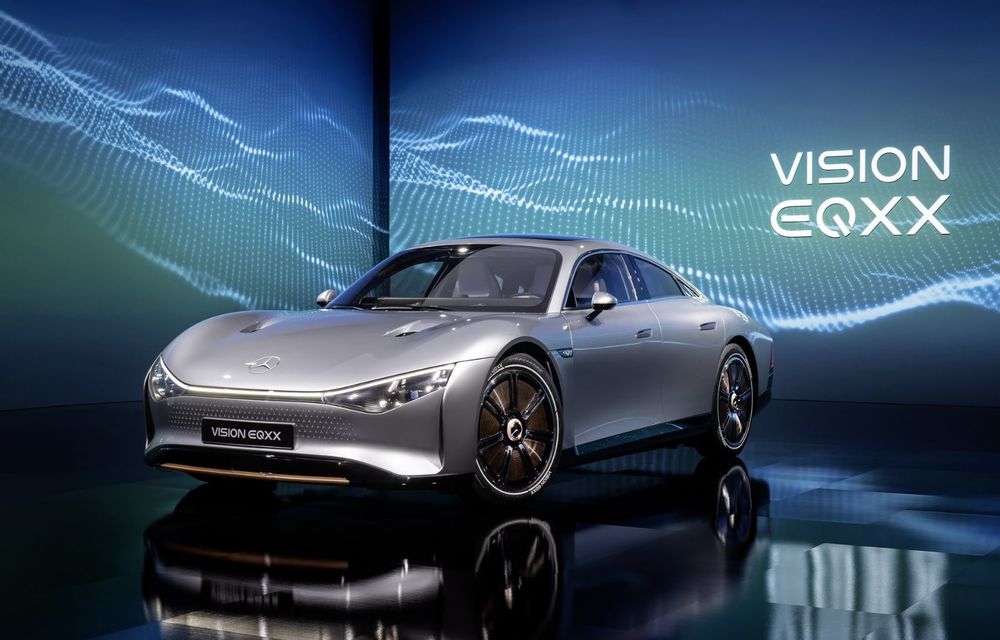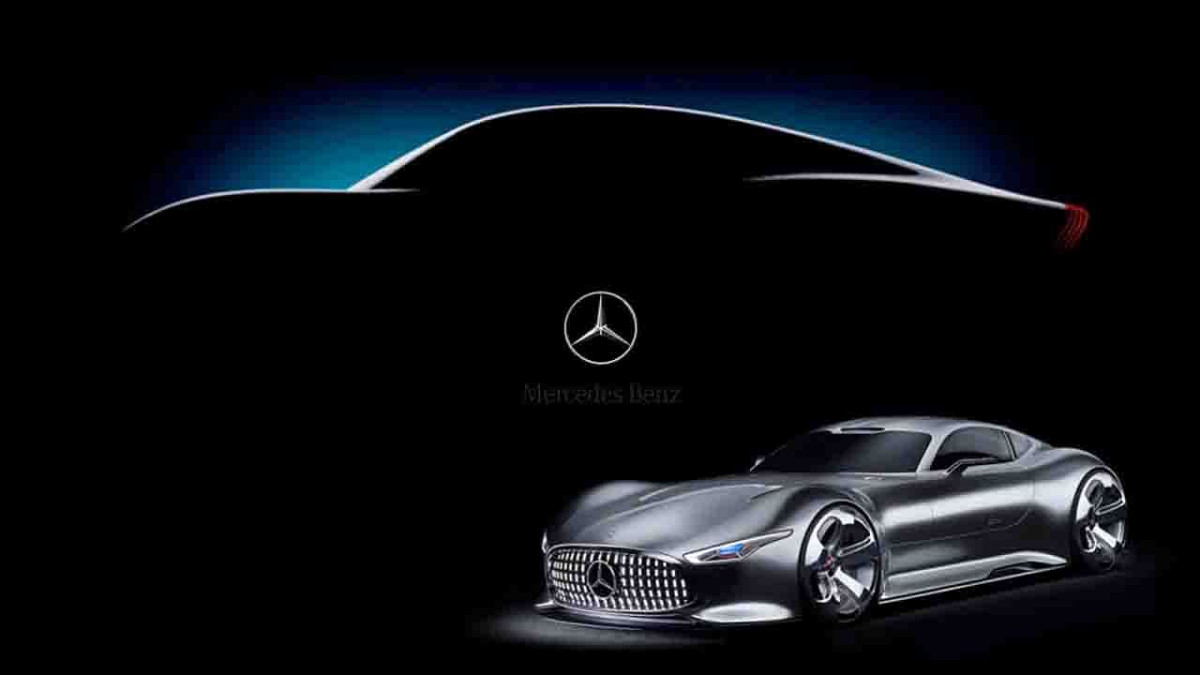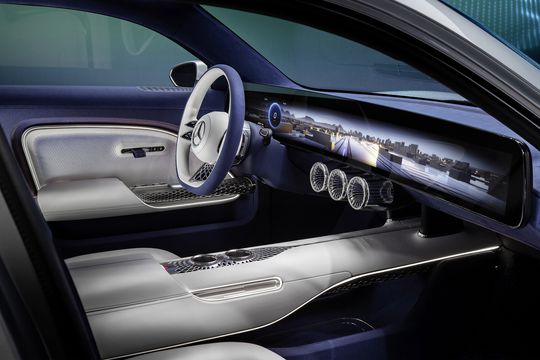
Leading the way. For over 1,000 kilometres.
Mercedes-Benz has unveiled the Vision EQXX research car, a luxury electric vehicle with efficiency at the forefront.
Mercedes-Benz is setting new standards for electric range and efficiency with the VISION EQXX. The prototype demonstrates just how efficient, sustainable and luxurious electromobility can be. This champion of efficiency has a range of more than 1,000 kilometres on a single battery charge, which equates to consumption of less than 10 kWh of energy per 100 kilometres. This is due in part to the exterior design and aerodynamics, which achieve a benchmark drag coefficient of 0.17. The irresistible bodywork takes the revolution further: the VISION EQXX demonstrates precisely what will make an electric vehicle a Mercedes-Benz in the future, with lightweight design, battery innovations and new materials.

Breathtaking Design
The fine art of aerodynamics has a long and illustrious tradition at Mercedes-Benz. Automotive enthusiasts will recall the C 111 from the 1970s. Today, it is the luxury class pioneer, the EQS, that holds the world record for the most aerodynamic production vehicle. The VISION EQXX is now establishing the next milestone – with a drag coefficient of just 0.17. This record value is of particular importance for electric driving and, above all, for the range. This is because two-thirds of the electric energy is needed just to counter the air resistance.
The forms flow seamlessly with unparalleled elegance from the front over the powerful, sensuous shoulders right to the highly effective aerodynamics of the rear spoiler edge. Many other details demonstrate how consistently and almost uncompromisingly the VISION EQXX has been designed for aerodynamics: the front face is smaller than that of a compact CLA and thus poses minimal resistance. A narrower rear wheel track allows the air to flow more efficiently. And transparent external covers on the wheels prevent virtually all air turbulence, while also allowing amazing views of the rose-gold magnesium rims.

The interior: between luxury and nature.
Mercedes-Benz has forged new paths when developing the interior. The VISION EQXX features a surprising mix of sustainable materials in its interior: from mushrooms to bamboo, cactus and vegan silk. These show that it is still possible to achieve the utmost in automotive luxury without using animal products, whilst creating an inimitable feeling of premium comfort. This fascinating journey has halved the carbon footprint of the leather alone.
The drivetrain. World-leading efficiency.
New, sustainable mobility is not measured in horsepower, km/h or seconds. The mobility of the future will be measured in efficiency – and against the benchmark of the VISION EQXX, with its energy efficiency of 95%. This means that 95% of the energy stored in the battery reaches the wheels. By way of comparison, a vehicle with an efficient internal combustion engine achieves around 30% and an average human long-distance runner achieves around 50%. A dedicated team of Mercedes-Benz engineers worked with the motor-racing specialists from High Performance Powertrains (HPP) and Mercedes-Benz Grand Prix (MGP) to develop a highly efficient and compact electric powertrain and a lightweight battery housing. They have spent many years working to reduce mechanical friction to a minimum so that the power reaches the racetrack with as little loss as possible.

A battery reaching new dimensions.
Instead of just making the battery bigger and thus heavier, the energy density has been significantly improved – to 200 Wh/kg to be precise. This enables the battery of the VISION EQXX to store 100 kWh, whilst taking up 50% less space and weighing 30% less than batteries with comparable capacity. State-of-the-art silicon anodes have been used in combination with ultra-lightweight materials from Formula One, for instance, which has significantly increased the battery capacity.
The electric system, which supplies power to many auxiliary units in the VISION EQXX, draws additional energy from solar cells on the roof. This reduces the energy demands of the high-volt system and ultimately leads to more range. On a single day with ideal conditions, this can produce up to 25 kilometres extra range for long-distance journeys.
Source: mercedes-benz.com
